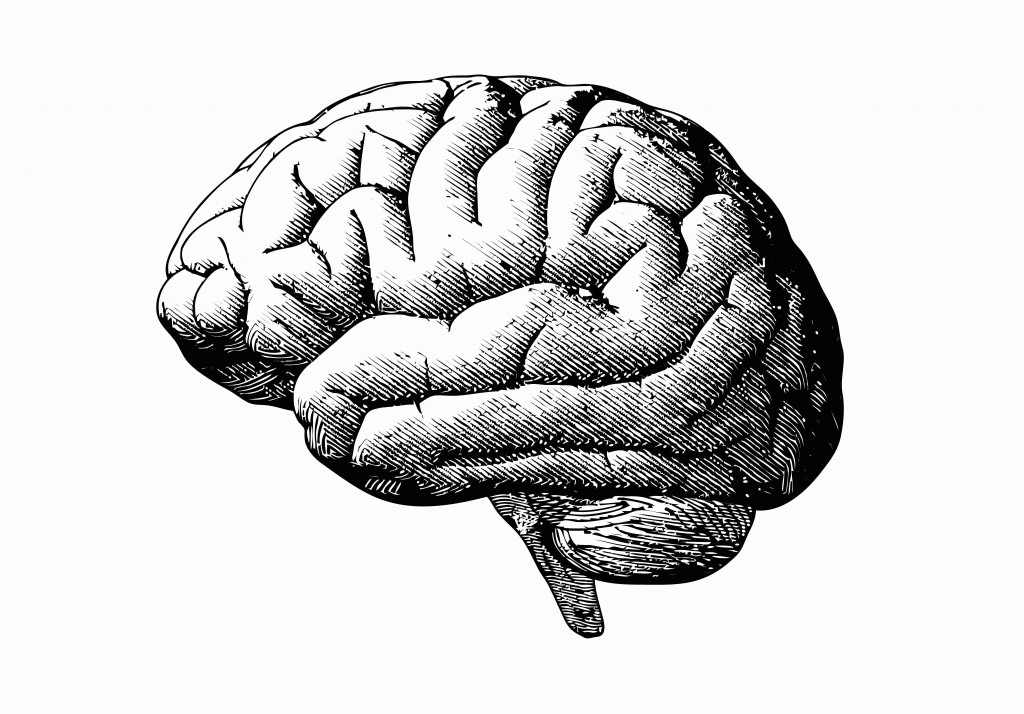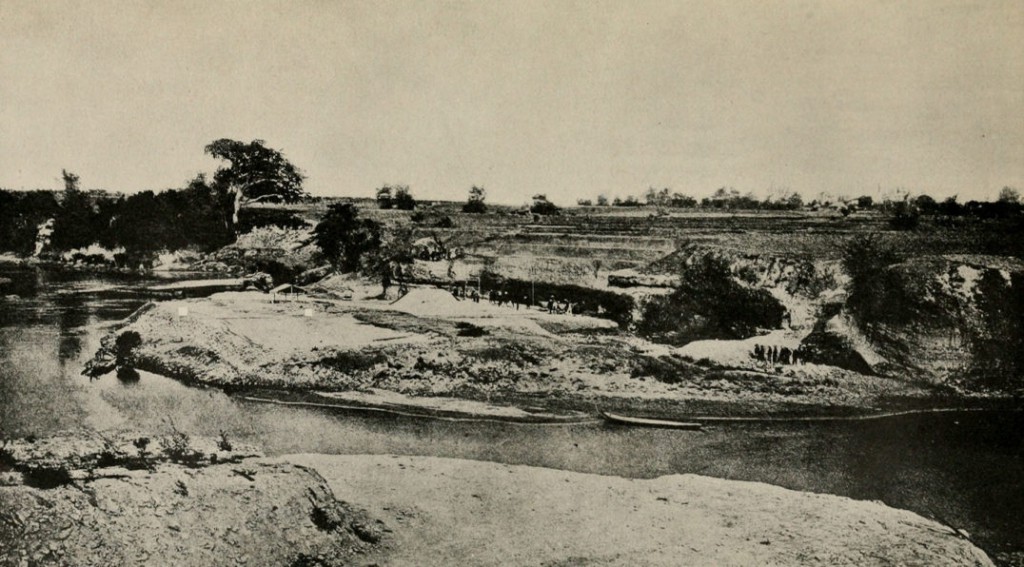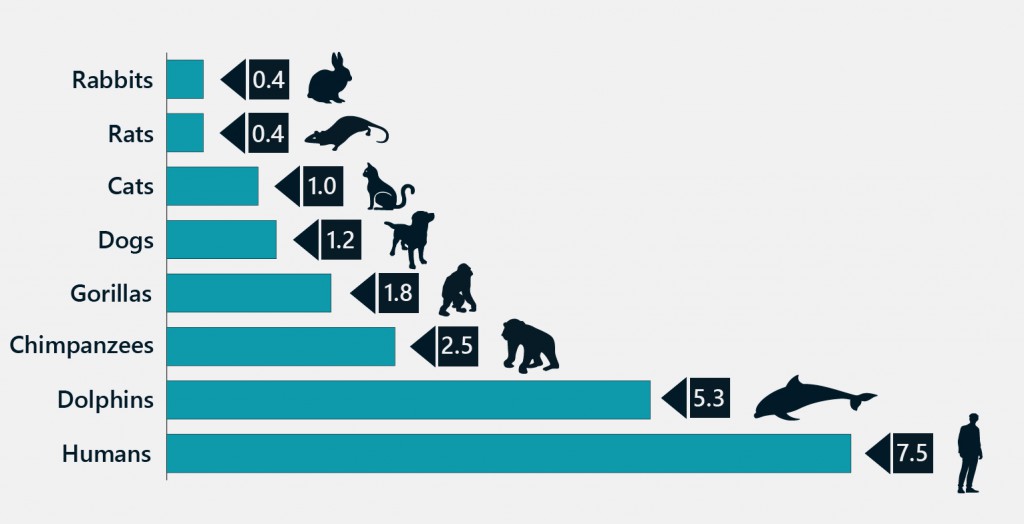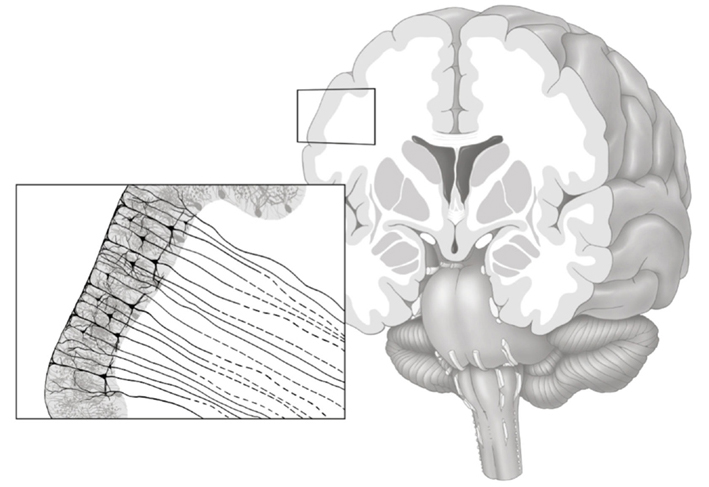How Human Smarts Evolved
Posted on Categories Discover Magazine

A subtle tweak in brain organization happened more than 60 million years ago. Without it, humans never could have evolved. (Credit: Jolygon/shutterstock)
Suzana Herculano-Houzel spent most of 2003 perfecting a macabre recipe—a formula for brain soup. Sometimes she froze the jiggly tissue in liquid nitrogen, and then she liquefied it in a blender. Other times she soaked it in formaldehyde and then mashed it in detergent, yielding a smooth, pink slurry.
Herculano-Houzel had completed her Ph.D. in neuroscience several years earlier, and in 2002, she had begun working as an assistant professor at the Federal University of Rio de Janeiro in Brazil. She had no real funding, no laboratory of her own—just a few feet of counter space borrowed from a colleague.
“I was interested in questions that could be answered with very little money [and] very little technology,” she recalls. Even so, she had a bold idea. With some effort—and luck—she hoped to accomplish something with her kitchen-blender project that had bedeviled scientists for over a century: to count the number of cells in the brain—not just the human brain, but also the brains of marmosets, macaque monkeys, shrews, giraffes, elephants, and dozens of other mammals.
Her method might have seemed carelessly destructive at first. How could annihilating such a fragile and complex organ provide any useful insights? But 15 years on, the work of Herculano-Houzel and her team has overturned some long-held ideas about the evolution of the human mind. It is helping to reveal the fundamental design principles of brains and the biological basis of intelligence: why some large brains lead to enhanced intelligence while others provide no benefit at all. Her work has unveiled a subtle tweak in brain organization that happened more than 60 million years ago, not long after primates branched off from their rodent-like cousins. It might have been a tiny change—but without it, humans never could have evolved.
The questions that Herculano-Houzel sought to answer go back more than 100 years, to a time when scientists were just starting to study the relationship between brain size and intelligence.
In August 1891, laborers working for the Dutch anatomist Eugène Dubois began excavating trenches along a steep riverbank on the Indonesian island of Java. Dubois hoped to find early hominin remains.

The first Homo erectus fossil ever discovered, found in 1891 in Java, Indonesia, brought new questions about the relationship between brain size and intelligence in the Homo genus. In this photo, the two white squares indicate where the femur (left) and the skullcap (right) of this “Java man” were unearthed. (Credit: Aleš Hrdlička/Wikimedia Commons)
Over the course of 15 months, layers of sandstone and hardened volcanic gravel yielded the petrified bones of elephants and rhinos, and, most importantly, the skullcap, left femur, and two molars of a human-like creature thought to have died nearly a million years before. That specimen, named Pithecanthropus erectus, and later Java man, would eventually come to be known as the first example of Homo erectus.
Dubois made it his mission to infer the intelligence of this early hominin. But he had only three fragments of seemingly relevant information: its estimated brain size, stature, and body weight. Would this be enough?
Zoologists had long noticed that when they compared different species of animals, those with bigger bodies had larger brains. It seemed as if the ratio of brain weight to body weight was governed by a mathematical law. As a start, Dubois set out to identify that law. He gathered the brain and body weights of several dozen animal species (as measured by other scientists), and using these, he calculated the mathematical rate at which brain size expands relative to body size. This exercise seemed to reveal that across all vertebrates, the brain really does expand at a similar rate relative to body size.
Dubois reasoned that as body size increases, the brain must expand for reasons of neural housekeeping: Bigger animals should require more neurons just to keep up with the mounting chores of running a larger body. This increase in brain size would add nothing to intelligence, he believed. After all, a cow has a brain at least 200 times larger than a rat, but it doesn’t seem any smarter. But deviations from that mathematical line, Dubois thought, would reflect an animal’s intelligence. Species with bigger-than-predicted brains would be smarter than average, while those with smaller-than-predicted brains would be dumber. Dubois’ calculations suggested that his Java man was indeed a smart cookie, with a relative brain size—and intelligence—that fell somewhere between modern humans and chimpanzees.
Dubois’ formula was later revised by other scientists, but his general approach, which came to be known as “allometric scaling,” persisted. More modern estimates have suggested that the mammalian brain mass increases by an exponent of two-thirds compared to body mass. So a dachshund, weighing roughly 27 times more than a squirrel, should have a brain about 9 times bigger—and in fact, it does. This concept of allometric scaling came to permeate the discussion of how brains relate to intelligence for the next hundred years.
Seeing this uniform relationship between body and brain mass, scientists developed a new measure called encephalization quotient (EQ). EQ is the ratio of a species’ actual brain mass to its predicted brain mass. It became a widely used shorthand for intelligence. As expected, humans led the pack with an EQ of 7.4 to 7.8, followed by other high achievers such as dolphins (about 5), chimpanzees (2.2 to 2.5), and squirrel monkeys (roughly 2.3). Dogs and cats fell in the middle of the pack, with EQs of around 1.0 to 1.2, while rats, rabbits, and oxen brought up the rear, with values of 0.4 to 0.5. This way of thinking about brains and intelligence has been “very, very dominant” for decades, says Evan MacLean, an evolutionary anthropologist at the University of Arizona in Tucson. “It’s sort of a fundamental insight.”

The encephalization quotient measures the ratio of a species’ actual brain mass to its predicted brain mass. (Credit: Cay Leytham-Powell/SAPIENS)
This paradigm still held sway when Herculano-Houzel was going through graduate school in the 1990s. “The intuition behind it made perfect sense,” she says. When she began trying to count neurons in the early 2000s, she imagined herself simply adding a layer of nuance to the conversation. She didn’t necessarily expect to undermine it.
By the early 2000s, scientists had already been counting neurons for decades. It was slow, painstaking work, usually done by cutting brain tissue into ultra-thin prosciutto-like slices and viewing these under a microscope. Researchers typically counted hundreds of cells per slice. Tallying enough neurons to estimate the average number of cells for a single species was time-consuming, and the results were often uncertain. Each nerve cell is branched like a twisty oak tree; its limbs and twigs crisscross with those of other cells, making it hard to know where one cell ends and another begins.
This is the problem that Herculano-Houzel set out to solve. By early 2003, she realized that the best way to count nerve cells in brain tissue might be to eliminate the complexity altogether. It occurred to her that each nerve cell, no matter how branched and contorted, should contain only one nucleus—the little sphere that holds the cell’s DNA. All she had to do was find a way to dissolve the brain tissue while keeping the nuclei intact. Then she could count the nuclei to figure out how many cells there were; it would be as simple as counting checkers on a checkerboard.
After 18 months, she settled on a procedure that involved hardening the brain tissue with formaldehyde and then mashing it gently with detergent—repeatedly pushing a plunger into the glass tube, turning it as she went, until she had a uniform slurry. She diluted the liquid, squeezed a drop of it onto a glass slide, and peered at it through a microscope. A constellation of blue dots lay scattered across her field of view: the cell nuclei, lit up with a DNA-binding dye. By staining the nuclei with a second dye, which binds to specialized nerve proteins, she could count how many of them came from nerve cells—the cells that actually process information in brains—rather than other types of cells found in brain tissue.

Neuroscientist Suzana Herculano-Houzel holds up a tube that contains a liquid suspension of all the cell nuclei that once made up a mouse brain. (Credit: James Duncan Davidson/Flickr)
Herculano-Houzel counted a few hundred nerve cells over the course of 15 minutes; by multiplying this number up to the entire volume of liquid, she was able to calculate a totally new piece of information: An entire rat brain contains about 200 million nerve cells.
She looked at brains from five other rodents, from the 40-gram mouse to the 48-kilogram capybara (the largest rodent in the world, native to Herculano-Houzel’s home country of Brazil). Her results revealed that as brains get larger and heavier from one species of rodent to another, the number of neurons grows more slowly than the mass of the brain itself: A capybara’s brain is 190 times larger than a mouse’s, but it has only 22 times as many neurons.
Then in 2006, Herculano-Houzel got her hands on the brains of six primate species during a visit with Jon Kaas, a brain scientist at Vanderbilt University in Nashville, Tennessee. And this is where things got even more interesting.
What Herculano-Houzel found in these primates was totally different from rodents. “The primate brains had many more neurons than we expected,” she says. “It was right there, staring us in the face.”
Herculano-Houzel saw a clear mathematical trend among these six species that are alive today: As the primate brain expands from one species to another, the number of neurons rises quickly enough to keep pace with the growing brain size. This means that the neurons aren’t ballooning in size and taking up more space, as they do in rodents. Instead, they stay compact. An owl monkey, with a brain twice as large as a marmoset, actually has twice as many neurons—whereas doubling the size of a rodent brain often yields only 20 to 30 percent more neurons. And a macaque monkey, with a brain 11 times larger than a marmoset, has 10 times as many nerve cells.
The assumption that everyone had been making, that different mammalian species’ brains scaled up the same way, “was very obviously wrong,” says Herculano-Houzel. Primate brains were very different from those of rodents.
Herculano-Houzel published these first nonhuman primate results with Kaas and two other co-authors in 2007. And in 2009, she confirmed that this pattern holds true from small-brained primates all the way up to humans: At roughly 1,500 grams, the human brain weighs 190 times as much as a marmoset brain and holds 134 times as many nerve cells—about 86 billion in total. Her subsequent studies, published between 2009 and 2017, suggest that other major mammal groups, such as insectivores and cloven-hoofed artiodactyls (like pigs, antelopes, and giraffes), follow the rodent-like scaling pattern, with neuron numbers increasing much more slowly than brain mass. “There’s a huge difference between primates and non-primates,” says Herculano-Houzel, who moved to Vanderbilt University in 2016.
Her results didn’t reveal the exact process of evolution that led to the modern human brain. After all, she could only count brain cells in species that currently exist—and because they’re alive today, they aren’t human ancestors. But by studying a diversity of brains, from small to big, Herculano-Houzel learned about the design principles of brains. She came to understand that primate and rodent brains faced very different constraints in the way that they could evolve.
People in the anthropological community have responded positively to her work—though with a touch of caution. Robert Barton, an anthropologist who studies brain evolution and behavior at Durham University in the U.K., is convinced that neurons are packed more densely in the brains of primates than they are in those of other mammals. But he’s not yet convinced that the mathematical trend line—the rate at which brains add new neurons as they get bigger from species to species—is any greater in primates compared to other mammals. “I’d like to see more data before I completely believe it,” he says. He points out that Herculano-Houzel has so far studied the brains of about a dozen, out of several hundred known, primate species.
But Herculano-Houzel’s results have already dealt a serious blow to conventional wisdom. Scientists who calculated EQs had assumed that they were making apples-to-apples comparisons—that the relationship between brain size and number of neurons was uniform across all mammals. Herculano-Houzel showed that this wasn’t so.
“It’s a brilliant insight,” says MacLean, who himself has spent years studying the intellectual capacities of animals. “It’s pushed the field forward enormously.”
MacLean’s own work has also undermined the universality of EQ. His study, published with a large consortium of co-authors in 2014, compared the brains and cognitive abilities of 36 animal species—including 23 primates and a sprinkling of other mammals, and seven birds. MacLean assessed them on their capacity for impulse control (measured, for example, by an animal’s ability to calmly reach around a transparent barrier to obtain some food, rather than smashing against it in an impulsive grab). Impulse control is an important component of intelligence, which, unlike algebra skills, can be measured across diverse species.
MacLean found that EQ did a poor job of predicting this quality. Chimpanzees and gorillas have mediocre EQs of 1.5 to 2.5, but, says MacLean, “they did super well [in impulse control]. They were at the top.” Squirrel monkeys, meanwhile, scored far worse than chimps and gorillas on self-control, even though this species sports an EQ of 2.3.
Despite a relatively small sampling of animals and a lot of scatter in the data, MacLean found that the best predictor for self-control was absolute brain volume, uncorrected for body size: Chimps and gorillas may have EQs no better than squirrel monkeys, but their brains, in absolute terms, are 15 to 20 times bigger. (Their EQs may be thrown off because they have unusually big bodies, not small brains.) For primates, a bigger brain was a better brain, regardless of the animal’s size. (This was also the case for birds.)
In 2017, Herculano-Houzel published a study in which she looked at the same measurements of impulse control that MacLean had used, but she compared them to a new variable: the number of neurons that each species has in its cerebral cortex—the upper layer of brain tissue, often folded, that performs advanced cognitive functions, such as recognizing objects. Herculano-Houzel found that the number of cortical neurons predicted self-control about as well as absolute brain size had in MacLean’s study—and it also smoothed out a major glitch in his results: Birds may have tiny brains, but Herculano-Houzel found that those brains are densely packed. The Eurasian jay has a brain smaller than a walnut, but it has nearly 530 million neurons in its pallium (the brain structure in birds that is roughly equivalent to the mammalian cortex). Her numbers provided a compelling explanation for why these birds scored better on impulse control than did some primates with brains five times larger.
“The simplest, most important factor that should limit cognitive capacity,” concludes Herculano-Houzel, “is the number of neurons that an animal has in the cortex.”
If the secret to intelligence is simply having more neurons, then one might ask why rodents and other mammals didn’t just evolve bigger brains to accommodate their larger neurons. The reason is that ballooning neuron size presents a staggering problem. It eventually becomes unsustainable. Just consider a hypothetical rodent with the same number of neurons as a human—about 86 billion. That beast would need to drag around a brain weighing 35 kilograms. That’s nearly 25 times bigger than a human brain—about as heavy as nine gallons of water. “It’s biologically implausible,” says MacLean. It “would be insane—you couldn’t walk.”

White matter in the brain contains fat-coated axons that make long-distance connections between neurons in gray matter. (Credit: Frontiers in Psychiatry)
This problem of ballooning neuron size was probably one of the major factors that limited brain expansion in most species. The burning question is how primates managed to avoid this problem.
The usual curse of an ever-expanding neuron size may stem from the basic fact that brains function as networks in which individual neurons send signals to one another. As brains get bigger, each nerve cell must stay connected with more and more other neurons. And in bigger brains, those other neurons are located farther and farther away.
“Those are problems that have to be solved when you enlarge brains,” says Kaas, who often collaborates with Herculano-Houzel. He hypothesized that rodents and most other mammals addressed these problems in a simple way: by growing communication wires, called axons, that are longer, causing each neuron to take up more space.
In 2013, Herculano-Houzel found evidence for this theory by looking at white matter in the brains of five rodent and nine primate species. White matter contains much of the brain’s wiring—the fat-coated axons that cortical neurons use to make long-distance connections. Her work showed that the volume of white matter grows much more quickly in rodent species with larger brains than it does in primates. A large rodent called an agouti has eight times as many cortical nerve cells as a mouse, while its white matter takes up an astonishing 77 times as much space. But a capuchin monkey, with eight times as many cortical neurons as a small primate called a galago, has only 11 times as much white matter.
So as rodent brains get bigger, more and more brain volume has to be devoted to the wires that simply transmit information. Those wires don’t just get longer, they also get thicker—which allows signals to travel at a higher speed, to make up for the longer distances they have to cover. As a result, less and less space is available for the nerve cells that do the important work of actually processing information.
The downfall of rodents, in other words, is that their brains don’t adapt well to the problems of being big. They don’t compensate efficiently for the communication bottlenecks that emerge as brains increase in size. This constraint has severely limited their capacity for intelligence.
Primates, on the other hand, do adapt to these challenges. As primate brains become larger from species to species, their blueprints do gradually change—allowing them to circumvent the problem of long-distance communication.
Kaas thinks that primates managed to keep most of their neurons the same size by shifting the burden of long-distance communication onto a small subset of nerve cells. He points to microscopic studies showing that perhaps 1 percent of neurons do expand in big-brained primates: These are the neurons that gather information from huge numbers of nearby cells and send it to other neurons that are far away. Some of the axons that make these long-distance connections also get thicker; this allows time-sensitive information, such as a visual image of a rapidly moving predator, or prey, to reach its destination without delay. But less-urgent information—that is, most of it—is sent through slower, skinnier axons. So in primates, the average thickness of axons doesn’t increase, and less white matter is needed.
This pattern of keeping most connections local, and having only a few cells transmit information long-distance, had huge consequences for primate evolution. It didn’t merely allow primate brains to squeeze in more neurons. Kaas thinks that it also had a more profound effect: It actually changed how the brain does its work. Since most cells communicated only with nearby partners, these groups of neurons became cloistered into local neighborhoods. Neurons in each neighborhood worked on a specific task—and only the end result of that work was transmitted to other areas far away. In other words, the primate brain became more compartmentalized. And as these local areas increased in number, this organizational change allowed primates to evolve more and more cognitive abilities.
All mammal brains are divided into compartments, called “cortical areas,” that each contain a few million neurons. And each cortical area handles a specialized task: The visual system, for example, includes different areas for spotting the simple edges of shapes and for recognizing objects. Rodent brains don’t seem to become more compartmentalized as they get larger, says Kaas. Every rodent from the bite-sized mouse to the Doberman-sized capybara has about the same number of cortical areas—roughly 40. But primate brains are different. Small primates, such as galagos, have around 100 areas; marmosets have about 170, macaques about 270—and humans around 360.
In primates, some of these new areas took on novel social tasks, such as recognizing faces and the emotions of others, and learning written or spoken language—the very skills that helped to drive the evolution of hominin culture, and, arguably, human intelligence. “Primates with large brains have really superior processing,” says Kaas. “But rodents with larger brains may be processing things almost the same as rodents with smaller brains. They haven’t gained much.”
Anthropologists have spent decades studying the important changes in brain structure that happened after the appearance of H. erectus (1.9 million years ago) or the split between hominins and great apes (8 million years ago). But Herculano-Houzel has now added a new piece to this picture by identifying another key moment in the evolution of human intelligence. In a sense, she has unearthed a new origin story for humanity—one that is no less important than the others we already knew.
This story unfolded a little over 60 million years ago, not long after early primates had split off, in quick succession, from three other major groups of mammals that include modern-day rodents, tree shrews, and colugos (a.k.a. “flying lemurs”).
These early primates were smaller than rats. They crept quietly along tree branches at night, grasping twigs with their prehensile fingers and toes as they hunted insects. They didn’t look like much at all, says Herculano-Houzel.
But a subtle tweak had already occurred deep in their little brains—a change in the genes that guide how neurons connect to one another during fetal development. This change probably made little difference at first. But over the long run, it would profoundly separate primates from the rodents and other groups that they had parted ways with. This tiny change would keep nerve cells small, even as brains gradually got bigger and bigger. It would bend the arc of evolution for tens of millions of years to come. Without it, humans never would have walked the earth.
This work first appeared on SAPIENS under a CC BY-ND 4.0 license. Read the original here.